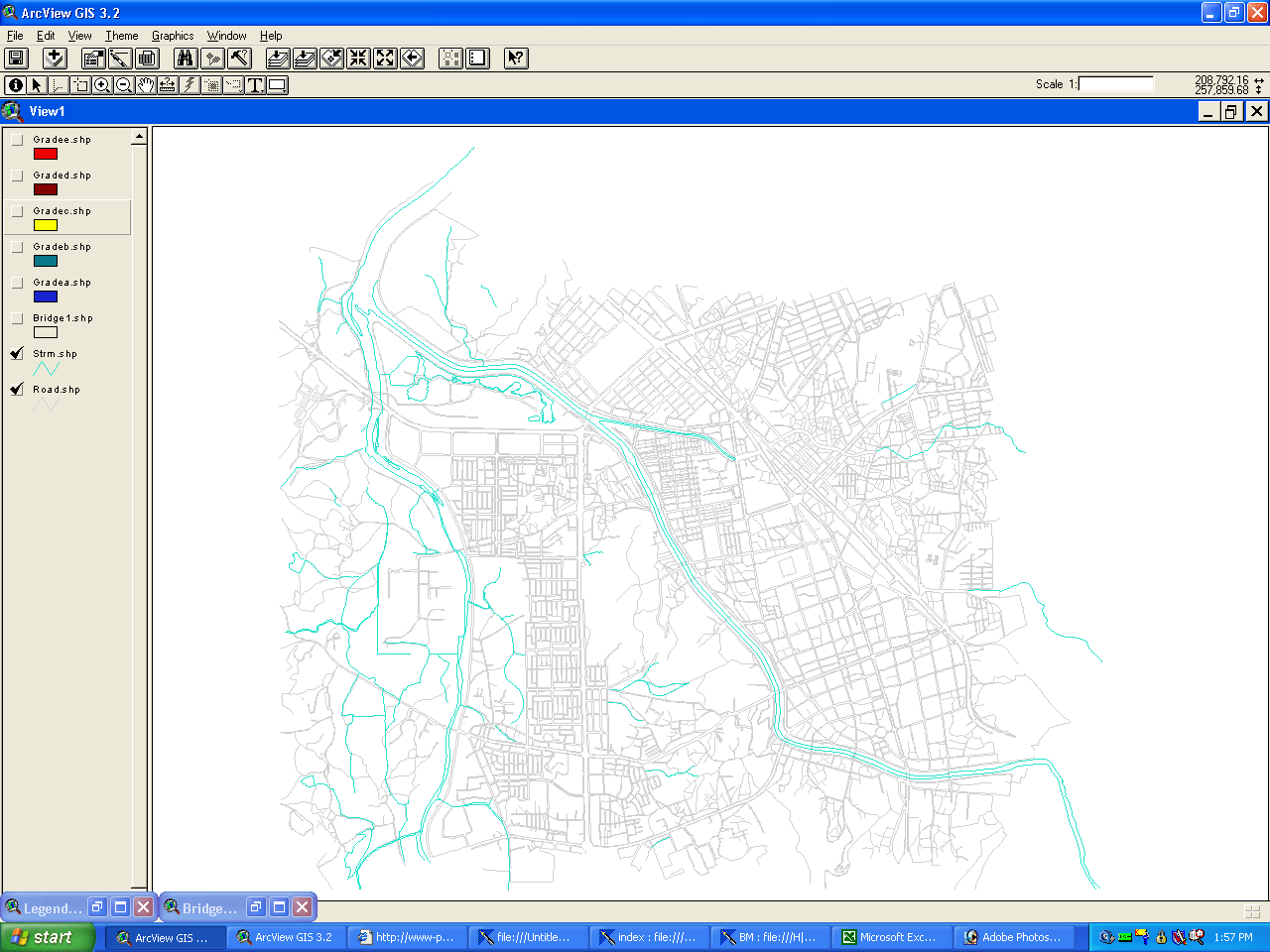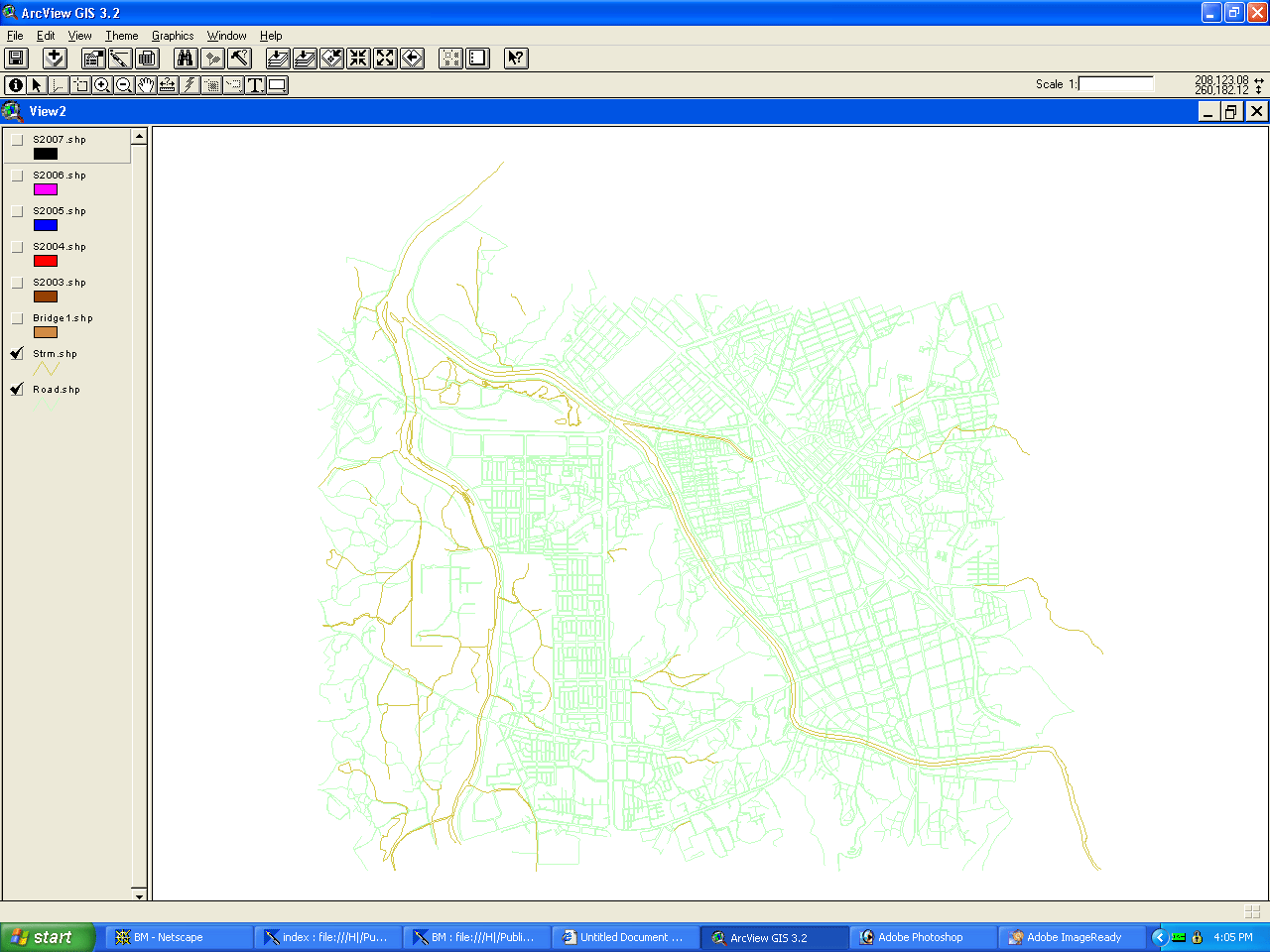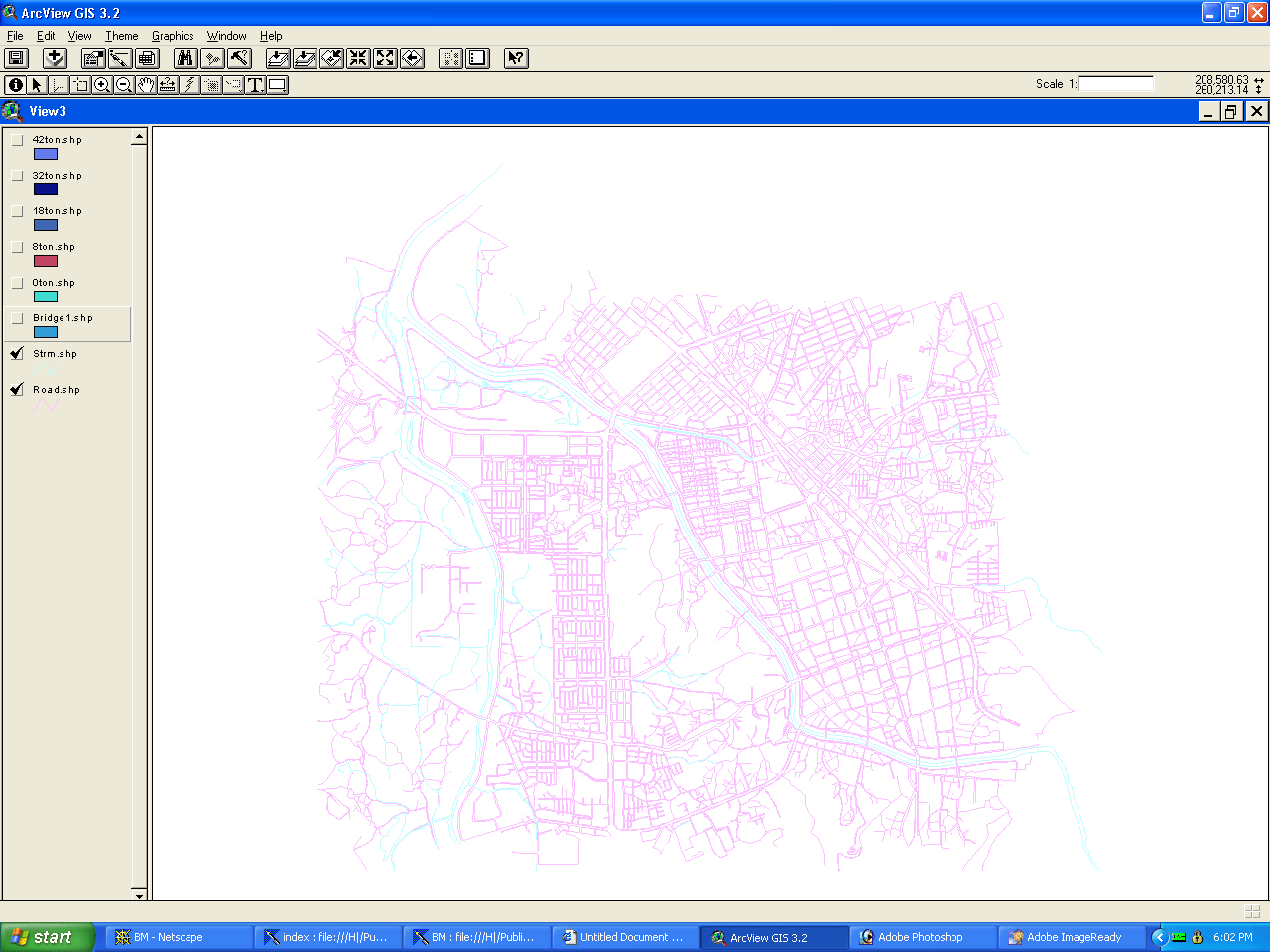
I. How many and which bridges should be checked for
safety for this year?
1. General rules for bridge safety checkup
The area of this project covers 23 bridges. Bridges are graded by laws and regulations into 5 groups from grade A which means safe to grade E which means dangerous. Those bridges are required to be checked for safety reguraly, but differently according to their grades. There are two kinds of method to check the safety. The first one is to inspect every brigdes every year, and the second one is to examine the bridges more accurately and deeply according to the regular period of each grade. Tabe 1. summarizes briefly general rules for bridge security check.
Table 1.
|
|
|
|
|
|
|
|
|
|
|
|
|
|
|
|
|
|
|
|
|
|
|
|
|
|
|
|
|
|
|
|
|
|
|
|
2. Bridge information system
Bridge information system which is one layer of Infrastructure Management System has the data of all bridges such as grade, constuction year, height, width, number of lanes, number of spans, year of last security check, year of next security check, transportation, and so on. Through this system, it is possible to easily identify the bridges and analyze the problems of these bridges. For example, Figure 1. shows the 5 groups of bridges from grade E to grade A.
Figure 1.

3. Annual planning for bridge safety checkup.
To budget the cost of bridge safety check for the next year, it is necessary to determine first how many and which bridges should have safety check. BIS includes the historical data of safe check of each bridges such as grades, the year of last examination(lstexam), and the year of next examination(nxtexam). Figure 2. shows the annual bridges to have the close examination for next 5 years from 2003 to 2007.
Figure 2.

II. Which bridges are allowed for heavy vehicles to
enter?
1. Weight limit of Transits on each bridge
Each bride has the weight limit of transits which may pass through it. The wight limits are dependent on the design load of each bridge which might be decided at the time of initial planning and design phases by an engineer who might design the bridge. Generally, there are three kinds of design load. Those are under DB 18ton, DB 18ton, and DB 24ton. Each of design load has its own maximum weight limit of vehicles. Table 2 shows the weight limit based on the design loads.
Table 2.
|
|
|
|
|
|
|
|
|
|
Most bridges which were buildt after 1980 have the design load of DB 24 ton, but most bridges which are older than 20 years have lower design load than DB 24 ton.
In some cases, weight limit can be given regardless of
the design load. If the bridge have some defaults, or the bridge located
on the road which has big transportation is necessary to be protected,
the weight limit can be lowered.
2. Set-up the weight limit of trasits on each bridge and identification of the pass-way for heavy vehicles which exceed the weight limit.
When setting up or changing the weight limit of transits, BIS will be very useful to identify the weight limit of each bridge. When trying to repair the sign board of weight limits of bridges, it is also useful. It is because BIS has all data about this, and can show them visiually. It is also useful for the heavy vehicle drivers who are strange to identify the roads to pass without any violation. Figure 3 shows the bridges according to their weight limits of transit from 0 ton to 42 ton.
Figure 3.
